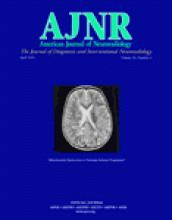An article on neuroanatomy may not be the highest priority in our daily deluge of reading material; what part of human anatomy is new, anyway? Hasn’t it all been pretty well described (and learned) by now? Didn’t Vesalius and da Vinci put all this to rest centuries ago?
There’s always room for fine-tuning. The article in this month’s AJNR by Demondion et al refocuses our attention on an anatomic area we might have thought we already knew pretty well. The reason to look more deeply into the neuroanatomy of the dorsal root of the spinal nerve lies in the increasing frequency with which interventional neuroradiologists are asked to access those structures to provide pain relief and deliver a more precise preoperative diagnosis and help ensure successful ultimate surgical outcomes. Demondion et al point out the pertinent anatomy of the region of the dorsal root and locations of exact nerve injection sites useful for CT or fluoroscopic guidance. Excellent CT and gross anatomic sections correspond with sharp photographic details of the posterior ramus, dorsal root ganglion, and associated tissues. Theirs is a nice, detailed piece of work, especially the images.
The imaging techniques, CT and fluoroscopy (or CT fluoroscopy), and the depiction of the pertinent neuroanatomy are what separate the neuroradiologist as pain therapists from the other specialists who perform these nerve root blocks and facet blocks blindly, by using surface anatomic features. It would be hoped that our approach might yield better results in evidence-based medicine, but of course, this all remains to be proved, one hopes, by large clinical trials by the next generation of neuroradiologists.
With reference to the specific application of the anatomic information contained in this article to the art of spinal nerve root sleeve blocks and facet blocks, this detailed information will help the practitioner increase his or her accuracy and possibly stay out of trouble. It is often unavoidable not to place a needle tip into one of those small blood vessels that inhabit the nerve root foramen, but it is important to know they might be there and to take some steps to be sure your needle is not in one before injection. This can take the form of simply drawing back on the needle to see whether there is any blood flow or a test injection of a tiny amount of nonionic contrast medium before the lidocaine or steroid injection. Also, knowing the relative size of the nerve root foramen or the capacity of the facet joint that is the target structure is always helpful in choosing the optimal amount of contrast material to inject, because one seeks to inject enough to get the job done but not too much to flood the region and render the specificity of the targeted injection moot.
So, neuroanatomy is important, and good solid basic scientific articles like this one need to be part of our continued reevaluation of the human nervous system.
- American Society of Neuroradiology












